Therapeutic Reflexology can benefit a wide range of individuals, including those experiencing stress, tension, and pain in the body. Reflexology is a non-invasive therapy that involves applying pressure to specific reflex points on the feet, hands, or ears to promote relaxation, improve circulation, and support the body’s natural healing processes. Don’t think that a cheap foot rub will do the same.
Is Reflexology Different From a Root Rub?
Therapeutic Reflexology and a foot rub may seem similar, as both involve touching and manipulating the feet. However, there are essential differences between the two methods.
Therapeutic Reflexology is a specialized form of foot massage that focuses on specific 15,000 points on the feet, hands, and ears, called reflex points. These reflex points correspond to particular organs, glands, and systems in the body, and applying pressure to them is believed to stimulate healing and promote balance in the body and is a complementary therapy to conventional medical treatment.
Foot Rub Theory
On the other hand, a foot rub is a general massage of the feet that may involve kneading, rubbing, and applying pressure to the muscles and soft tissues of the feet. While a foot rub can be relaxing and may provide temporary relief from tension and soreness in the feet, it does not target specific reflex points or aim to promote healing or balance in the body.
In addition, a trained reflexologist (200-300 hours) performs therapeutic Reflexology with a deep understanding of the reflex points on the feet and how they relate to the rest of the body. On the other hand, a foot rub can be performed by anyone and does not require any training or knowledge. The owner of the company usually trains the foot massage technicians.
People of all ages, including children, can benefit from therapeutic Reflexology, including:
- Individuals with chronic pain: Reflexology can reduce pain and improve the quality of life in people with arthritis, fibromyalgia, and migraines.
- People with anxiety and depression: Reflexology can help to promote relaxation, reduce stress, and improve mood, making it a beneficial complementary therapy for those with anxiety and depression.
- For people with digestive problems, Reflexology can support the liver, spleen, kidney, gastrointestinal, esophagus, large and small intestines, and colon. Reflexology promotes the rhythmic contraction and relaxation of the diaphragm resulting in a rhythmical massage of the abdominal organs and release muscular and emotional tension, which can severely hamper the digestive process.
- Cancer patients: Reflexology can help to alleviate symptoms associated with cancer and its treatments, such as pain, nausea, and fatigue.
- Pregnant women: Reflexology can reduce symptoms associated with pregnancy, such as back pain, morning sickness, and insomnia.
- Individuals with foot problems: Reflexology can help to improve circulation, reduce pain and swelling, and promote healing in the feet, making it a valuable therapy for those with conditions such as plantar fasciitis, bunions, and neuropathy.
What Reflexology is NOT
It is important to note that Reflexology is not be used as a substitution for medical treatment but rather as a complementary therapy to support overall health and well-being. If you are considering trying Reflexology, speak with a certified reflexologist to discuss your concerns or check with your healthcare provider, where many don’t know anything about Reflexology.
Therapeutic Reflexology can benefit a wide range of individuals, including those experiencing stress, tension, and pain in the body. It is a non-invasive therapy that involves applying pressure to specific reflex points on the feet, hands, or ears to promote relaxation, improve circulation, and support the body’s natural healing processes.
Overall, therapeutic Reflexology and a foot rub are different in their focus, technique, and intended outcomes. If you are seeking a therapeutic intervention that aims to promote overall health and well-being, therapeutic Reflexology may be a better choice for you.
Who Can Benefit From a Reflexology Session?
People of all ages, including children, (I love working with children) can benefit from therapeutic Reflexology, including:
- Individuals with chronic pain: Reflexology can reduce pain and improve the quality of life in people with arthritis, fibromyalgia, and migraines.
- People with anxiety and depression: Reflexology can help to promote relaxation, reduce stress, and improve mood, making it a beneficial complementary therapy for those with anxiety and depression.
- For people with Digestive problems, Reflexology can support the liver, spleen, kidney, gastrointestinal, esophagus, large and small intestines, and colon. Reflexology promotes the rhythmic contraction and relaxation of the diaphragm resulting in a rhythmical massage of the abdominal organs. Reflexology helps to release muscular and emotional tension, which can severely hamper the digestive process.
- Cancer patients: Reflexology can help to alleviate symptoms associated with cancer and its treatments, such as pain, nausea, and fatigue.
- Pregnant women: Reflexology can reduce symptoms associated with pregnancy, such as back pain, morning sickness, and insomnia.
- Individuals with foot problems: Reflexology can help to improve circulation, reduce pain and swelling, and promote healing in the feet, making it a valuable therapy for those with conditions such as plantar fasciitis, bunions, and neuropathy.
Reflexology Disclaimer (Reflexologists are not miracle workers!)
It is important to note that Reflexology should not be used as a substitute for medical treatment but rather as a complementary therapy to support overall health and well-being. If you are considering trying Reflexology, speak with a certified reflexologist and your healthcare provider to determine if it is right for you, even though 95% medical doctors have no idea what Reflexology is.
Is Reflexology a One-Time Shot? This is like asking if you go to the gym one time, will you see the results you desire?
The number of reflexology sessions required before seeing benefits can vary depending on the individual and their specific health concerns. Some people may experience relief from symptoms after just one session, while others may require multiple sessions before noticing a significant improvement. The golden number is between four to five session. The exact number of sessions will depend on your individual needs and goals and your response to the therapy. Many people continue to receive regular reflexology sessions as maintenance therapy to support their ongoing health and well-being. These people see how value how Reflexology have improved their health over 16 years of my practice.
 About the Writer, Reflexologist, and Filmmaker
About the Writer, Reflexologist, and Filmmaker
Helen Chin Lui is a Certified Reflexologist, Certified Energy Medicine Practitioner, Reiki Master, and teacher. She is the owner of Healing Place LLC and Healing Place Energy School LLC.
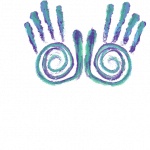 Healing Place LLC
Healing Place LLC
Healing Place LLC specializes in helping people of all ages break the pain cycles of chronic pain and chronic digestive problems and balances hormones naturally. If you would like to learn how Reflexology can support your health, please schedule a FREE consultation on the HealingPlaceMedfield.com website or call us (508) 359-6463
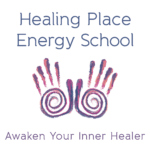 Healing Place Energy School LLC
Healing Place Energy School LLC
Want to learn how to better care for yourself and your loved one with holistic medicine? Become a member of HealingPlaceEnergySchool.com. We offer self-care courses: Energy Medicine, Mindful, Reflexology, Meditations, and Self-Awareness. You can take video courses from the privacy of your home. These are empowering self-care and self-help classes that teach lifelong skills.
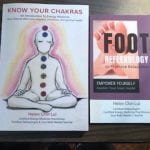 Helen Chin Lui’s Books
Helen Chin Lui’s Books
Get Helen’s Self Empowerment Books today. Know Your Chakras: Introduction to Energy Medicine and Foot Reflexology to Promote Relaxation.
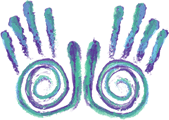

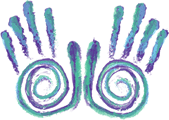







 The Healing Place LLC helps all ages to find relief from chronic pain, chronic digestive problems and balance hormones naturally. We practice COVID19 safety. Don’t forget to check on our online school HealingPlaceEnergySchool.com. Thank you.
The Healing Place LLC helps all ages to find relief from chronic pain, chronic digestive problems and balance hormones naturally. We practice COVID19 safety. Don’t forget to check on our online school HealingPlaceEnergySchool.com. Thank you.
Recent Comments